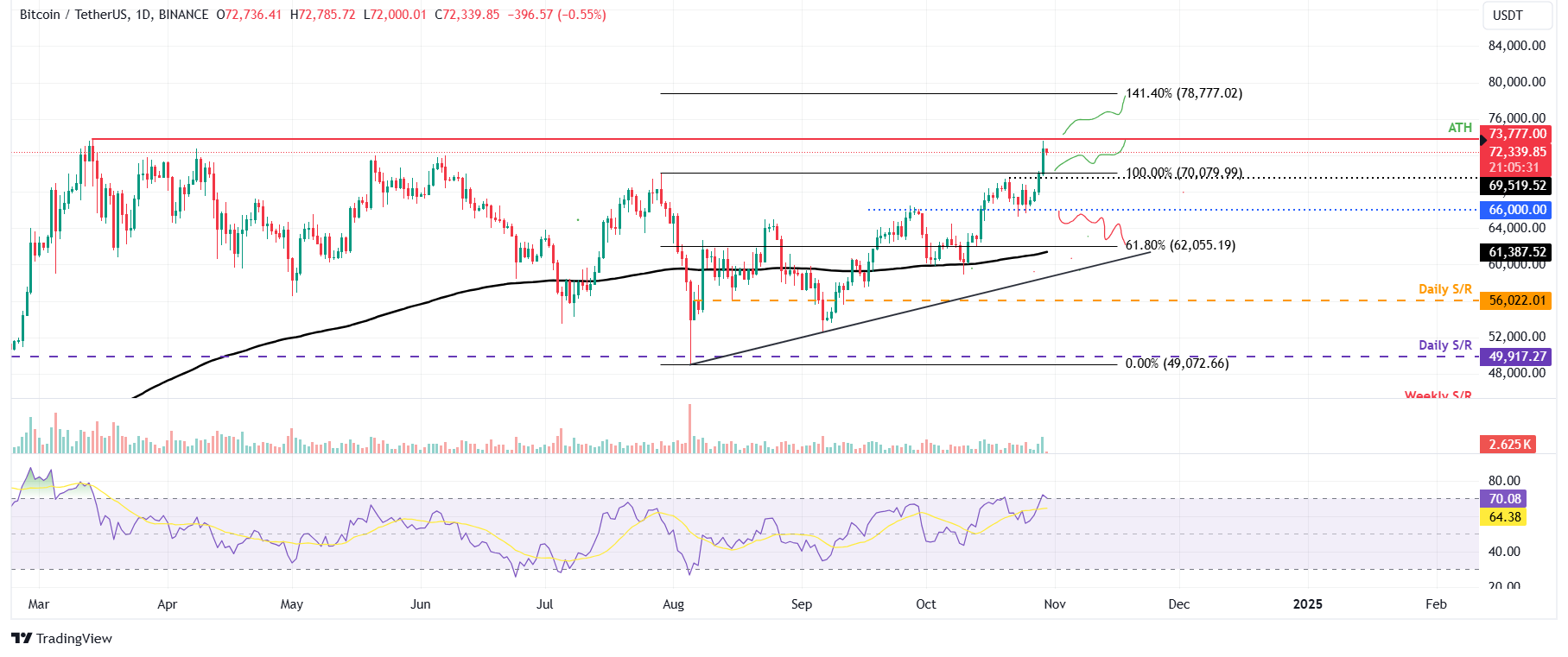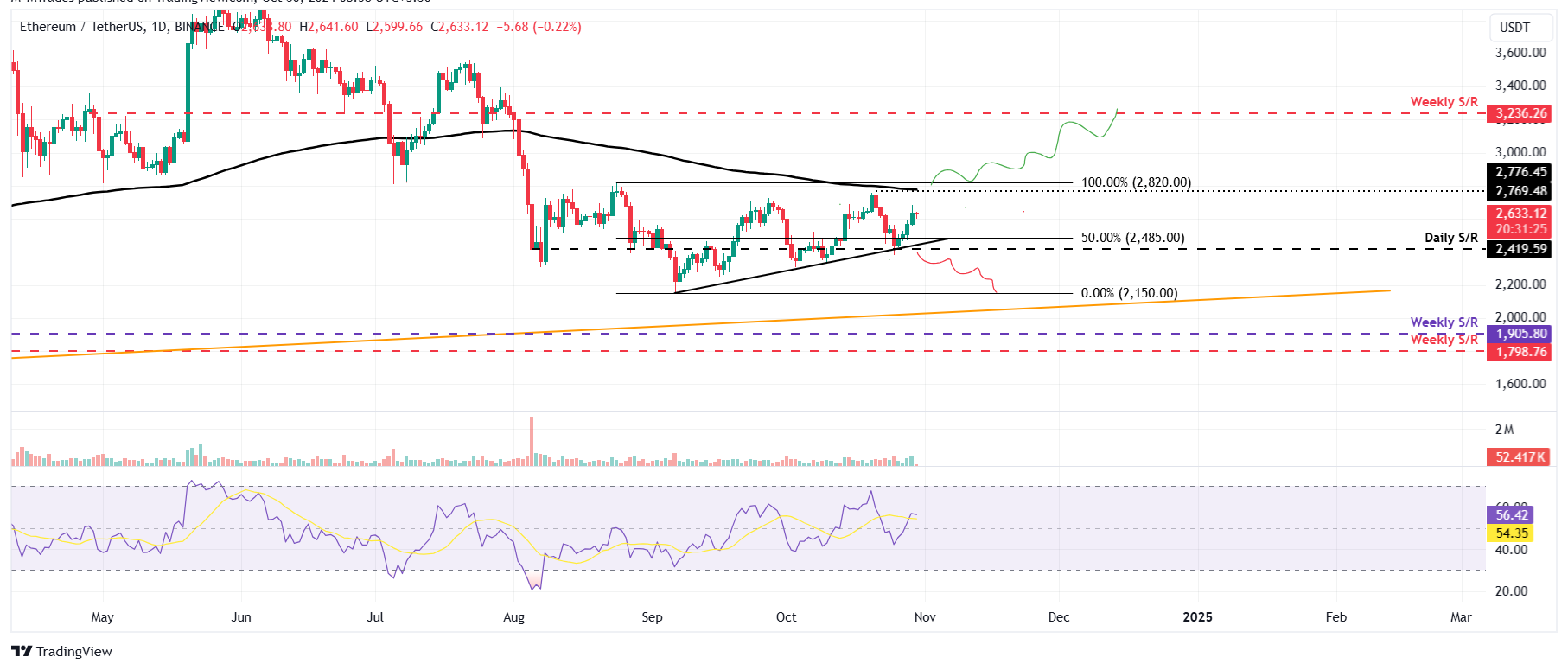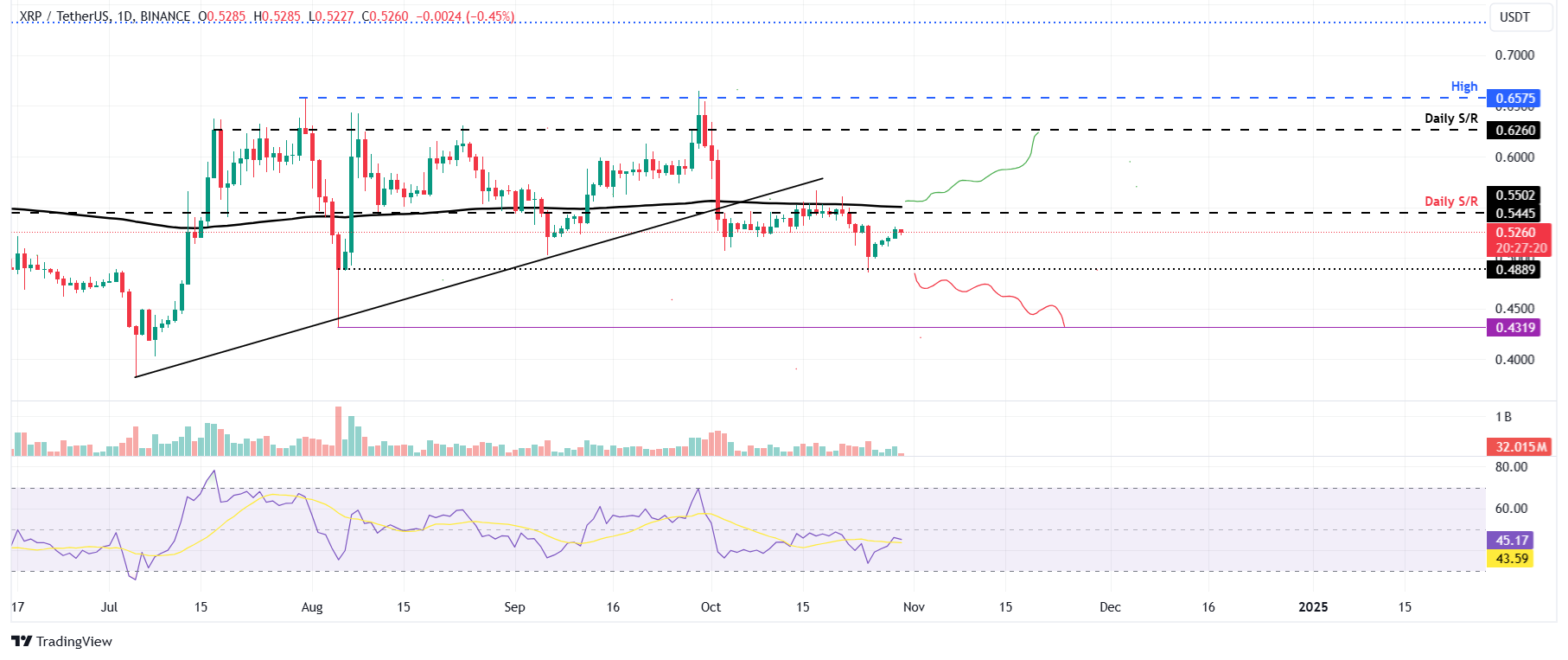- Bitcoin was trading above $72,000 on Wednesday, heading towards all-time highs in the short term.
- Ethereum price is supported by an uptrend line, which suggests a possible uptrend in the future.
- Ripple price finds support near the $0.488 level. A solid close below would suggest a continuation of the downtrend.
Bitcoin (BTC) has successfully retested a major support level and headed towards an all-time high in the short term, trading above $72,000 on Wednesday. Ethereum (ETH) has similarly found support near key levels, indicating potential for further upside. However, Ripple (XRP) recovered slightly after retesting a major support level. If the stock closes below this level, the decline may continue.
Bitcoin aiming for all-time high
Bitcoin price found support around $66,000 on Friday and rose 9% by Tuesday, reaching an intraday high of $73,620. At the time of writing on Wednesday, it was slightly down around $72,300.
If BTC maintains its upward momentum, it could quickly rise and retest the next major barrier of $73,777, the all-time high set in mid-March. A successful close above this level could pave the way for BTC to target the 141.40% Fibonacci extension level (from July high $70,079 to August low $49,072) at $78,777.
The Relative Strength Index (RSI) is hovering at an overbought level of 70, indicating strong bullish momentum. However, traders are advised not to add to long positions as this increases the chances of the price falling. Another option is for the rally to continue and the RSI to rise further until it is overbought and stay there.

BTC/USDT daily chart
If BTC closes below $66,000, it will fall another 5.8% to the 61.8% Fibonacci retracement level (subtracted from July high $70,079 to August low $49,072) at $62,055. There is a possibility of retesting the dollar's next support.
Ethereum price is poised for an upward move after finding support near the uptrend line
Ethereum price found support at the uptrend line (a trend line connecting multiple low levels since early September) on Friday, and was up 8.59% by Tuesday. As of Wednesday, it remained trading high near $2,630.
If the uptrend line continues to hold as support, ETH could rise to current levels and retest the 200-day EMA at $2,769. A close above $2,820 would signal another 15% rally and retest the next weekly resistance at $3,236.
The RSI on the daily chart is 56, above the neutral level of 50, indicating increasing bullish momentum.

ETH/USDT daily chart
Conversely, if ETH breaks below the uptrend line around $2,419 and closes below, the decline could widen by 11% and retest the September 6 low of $2,150.
If Ripple price closes below $0.488, it is ready to enter a downtrend
Ripple price faced resistance at the $0.550 level of the 200-day EMA on October 21st and fell 8.3% by Friday. It retested the August 6th low of $0.488, recovering 5.22% by Tuesday. At the time of writing on Wednesday, it was trading slightly lower at around $0.526.
If XRP continues its decline and closes below $0.488, the decline could widen by 12% and retest the August 5 low of $0.431.
The RSI indicator on the daily chart is 45, below the neutral level of 50, suggesting that the bearish momentum is gaining momentum.

XRP/USDT daily chart
If XRP continues its recovery and closes above the 200-day EMA at $0.550, the rally could extend by 13% and retest the next daily resistance level at $0.626.
Frequently asked questions about Bitcoin, altcoins, and stablecoins
Bitcoin is the largest cryptocurrency by market capitalization and is a virtual currency designed to function as money. This form of payment is not controlled by any particular person, group, or entity and eliminates the need for third parties to participate during financial transactions.
An altcoin is any cryptocurrency other than Bitcoin, but some consider Ethereum to be a non-altcoin because it is these two cryptocurrencies that forks occur. If this is true, Litecoin would be the first altcoin to fork from the Bitcoin protocol and thus be an “improved” version of it.
A stablecoin is a cryptocurrency that is designed to have a stable price, and its value is backed by the reserves of the asset it represents. To achieve this, the value of one stablecoin is pegged to a commodity or financial instrument, such as the US dollar (USD), and its supply is regulated by an algorithm or demand. The main purpose of stablecoins is to provide an on/off ramp for investors who wish to trade and invest in cryptocurrencies. Also, since cryptocurrencies are generally volatile, stablecoins allow investors to store value.
Bitcoin dominance is the ratio of Bitcoin's market capitalization to the market capitalization of all cryptocurrencies combined. This clearly shows the interest in Bitcoin among investors. BTC's dominance typically occurs around bull markets, where investors turn to relatively stable, high-market-cap cryptocurrencies like Bitcoin. A decline in BTC's dominance usually means investors are moving capital and profits to altcoins in search of higher returns, which usually causes an explosive rally in altcoins.

